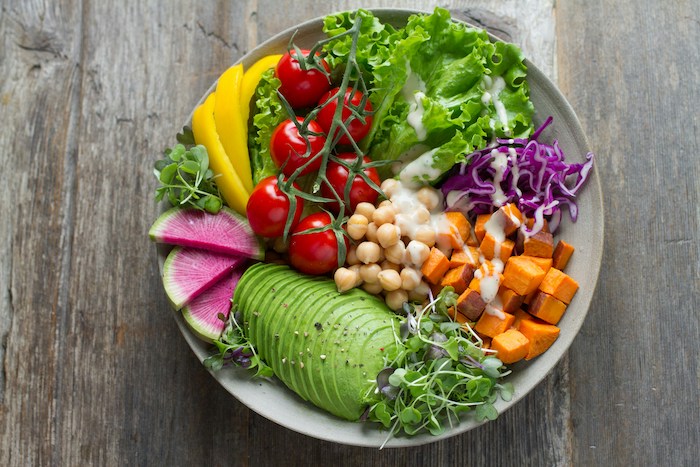The main objective of a low mold diet is to reduce the exposure to mold and mycotoxins, at least in the foods and beverages consumed. This type of diet can be helpful for a number of health issues, especially if they are related to mold. However, just by reducing the amount of toxins the body has to deal with, the low mold diet can be a helpful healing tool. By adopting this approach to eating, you can reduce your risk of mold and biotoxin-related illness. This can be done by choosing fresh, whole foods, and being mindful with food handling and preservation methods.
Basic Guidelines to Eating a Low Mold Diet
- Adopt a Whole-Food Based Diet: Processed foods are more prone to contain mold or mycotoxins due to processing and packaging. Sometimes they may contain preservatives like citric acid which is often now produced using a specific type of mold, instead of lemon juice.
- Avoid Consuming High Mold Foods: Certain foods and food products are prone to mold growth and contamination. These can include wheat, corn, peanuts, coffee, cocoa, leftover rice (eat rice within 24 hours to avoid mold), cultured foods, cheese, etc.
- Avoid Moldy or Spoiled Foods: Quickly discard any moldy food product as soon as mold is evident. Don’t try to just cut out or wash off the mold. Mold spores quickly disperse throughout a food item, so though you might not see the mold once you cut off the moldy spot, the mold roots can move quickly through the surface.
- Store Your Food Properly: Make sure your food items are stored in the right conditions and containers to avoid mold growth. Also note expiration dates and refrigerate leftovers promptly. Make sure to properly handle and wash food items to prevent mold contamination. Make sure to clean food preparation surfaces regularly, such as cutting boards, countertops, etc. It is also a good idea to regularly clean your refrigerator to prevent mold from growing on spills and crumbs.
High and Low Mold Foods
While the guidelines above are helpful, it is good to have a list of the foods that are more ideal on the low-mold diet, and the foods that should be avoided or reduced because of their proneness to testing high in mold contamination. It is important to note that a highly restrictive diet is not usually healthy, at least not for long-term. However, this list of foods to avoid and the ones to include can be helpful in meal planning for a low-mold diet.
Foods to include in a low-mold diet (preferably locally sourced or organic):
- Fresh fruits and vegetables
- Healthy protein (such as legumes, eggs, fish, and poultry)
- Low-mold whole grains (such as quinoa, oats, fresh rice–no leftovers, millet, etc)
- Raw or dry-roasted nuts and seeds (avoid peanuts and cashews)
- Healthy fats (like coconut oil, avocado, olive oil, etc)
- Fresh herbs and spices
- Low-mold drinks (make sure to only consume mold-free coffee and tea)
Foods to avoid on the low-mold diet:
- Processed and packaged foods
- Fermented foods (like sauerkraut and vinegar products)
- Dairy products
- Mold-contaminated nuts and seeds (like peanuts)
- Alcoholic beverages
- Sugar and refined foods
- Moldy or spoiled food
- High mold grains (such as wheat, barley, and rye)
Benefits of the Low-Mold Diet
There are numerous potential benefits to the low-mold diet and the minimization of exposure to mold and mycotoxins and for those with mold sensitivity:
- Reducing Mold or Mycotoxin Exposure: We are daily bombarded with toxins and potential hazards to our health. By reducing the mold in our diet, our body has the chance to process and function more easily. Individuals on the low-mold diet reduce their risk of developing mold-related health conditions.
- Symptom Management: For those who already have health conditions that may be related or aggravated by mold and mycotoxins, reducing that load or exposure on the body will help improve symptoms related to those conditions. A low-mold diet can help improve symptoms of conditions such as respiratory issues, allergies, fatigue, or cognitive dysfunction.
- Helps Support Immune System: A healthy diet low in toxins can improve immune function. A whole-food based approach will provide many minerals and nutrients needed for the immune system to work well and respond adequately to toxins and be resilient and not run-down.
- Improving Gut Health: Consuming healthy whole foods like fiber-rich fruits, vegetables, and legumes will support gut health and a healthy gut microbiome, which also improves immune function and wellness.
The Low-Mold Diet for Mold Testing
It is advised to go on a low-mold diet for a short time before doing a mold test like a mycotoxin urine test. Doing this avoids false positives from the foods you are consuming. By taking the test, you want to know if you have a mold issue within your body, and to get an accurate result for that it is best to adopt a low mold diet to make sure you aren’t just eating high mold foods that is passed through the body and picked up on the test. While you are preparing for your mold test it is also a good idea to avoid leftovers, as those can be prone to have mold.
Other Considerations
With anything, there are challenges to deal with and overcome. The low-mold diet can be restrictive if you aren’t sure to find a diversity of healthy low-mold whole foods and recipes that you will enjoy. You should aim to have a varied, nutrient dense meal plan to make sure you are meeting nutritional needs.
It may take a bit of time to notice improvements in symptoms with any diet. Consistency and dedication are important in case it takes several weeks or months for your body or health conditions to benefit from the reduction in mold and mycotoxins. Some individuals may experience a detox reaction. Any new developing or worsening symptoms should be evaluated by a health care practitioner.
The low-mold diet requires careful planning and preparation. It can be difficult to socialize around food and maintain the low-mold approach to eating. It can be helpful to communicate your needs and requirements to those you will be socializing with, as well as planning ahead to accommodate your dietary requirements.


